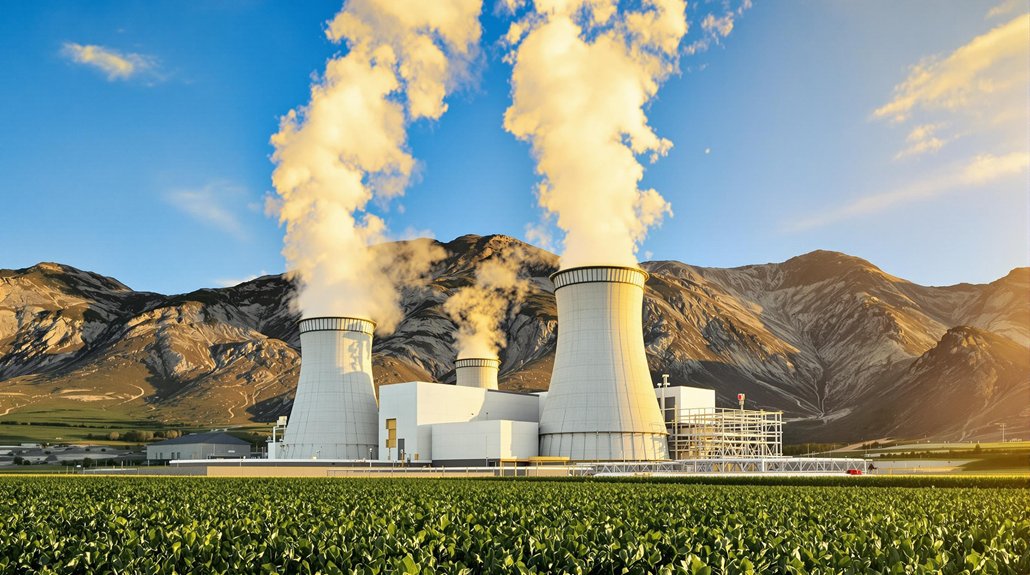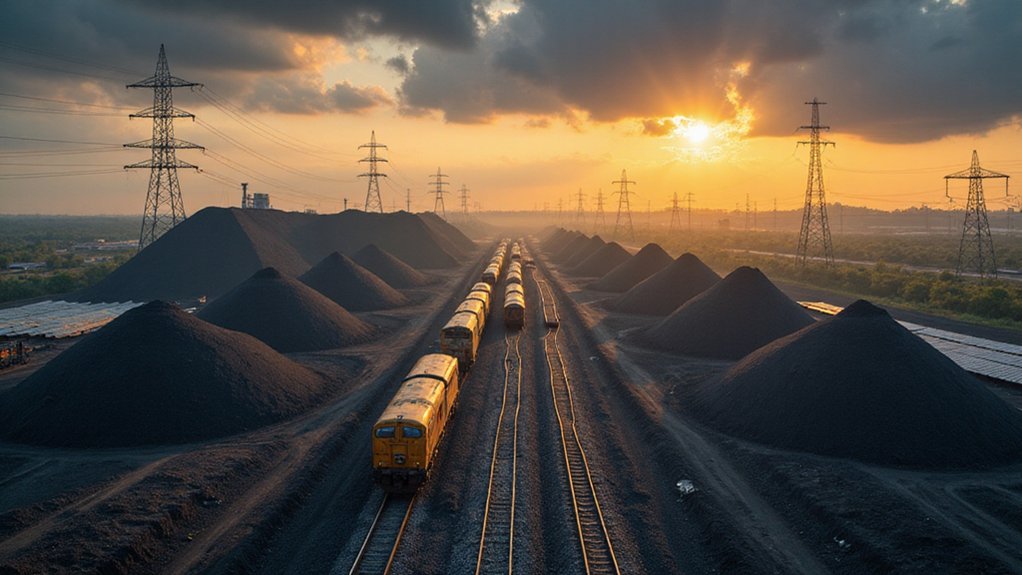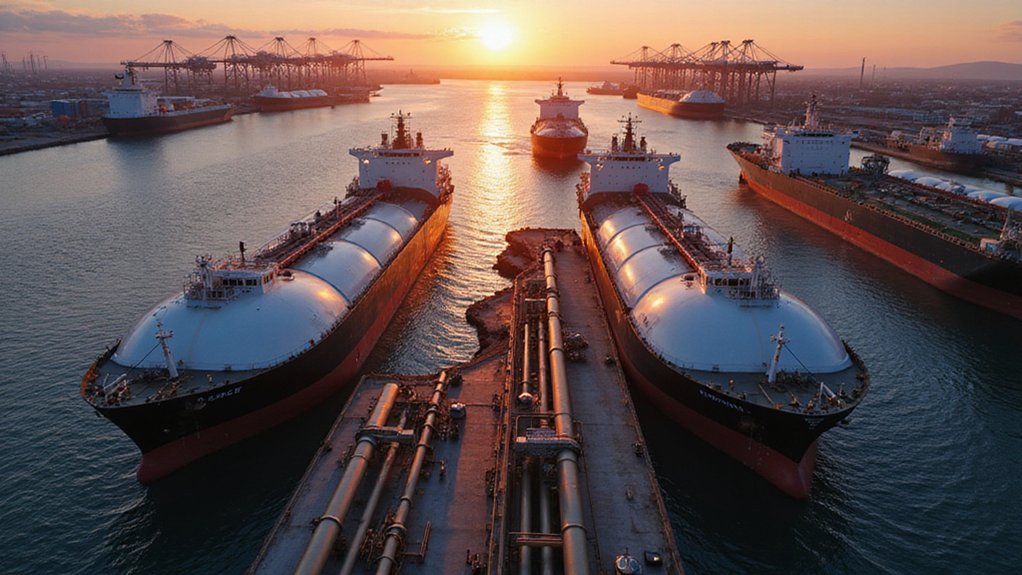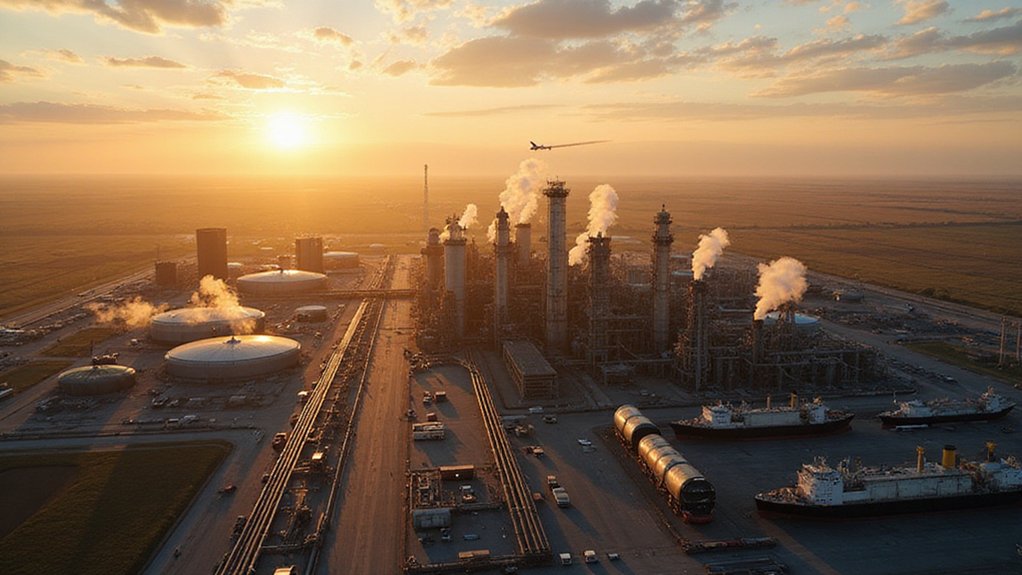OPEC+ is pumping oil at its highest level since the 2023 crisis, with the group approving a hefty 547,000 barrel per day increase for September 2025. This marks the sixth straight month of output hikes as the cartel gradually unwinds cuts that propped up prices during market uncertainty. The oil spigots are officially open. Wide open.
The increases have been steady since April, starting with a modest 138,000 bpd boost before ramping up to 411,000 bpd in May, June, and July, followed by 548,000 bpd in August. Do the math – that’s nearly 2 million barrels per day flowing back into the market by August, with just 280,000 bpd still waiting in the wings. The UAE even scored a special 300,000 bpd bonus above its share. Must be nice.
The floodgates are open—2 million barrels returning by August while UAE gets a sweet bonus deal above their quota.
This aggressive unwinding follows the November 2023 decision when OPEC+ slashed 2.2 million bpd to defend prices. Those cuts stuck around until March 2025, when the group finally saw enough “healthy economic outlook” and “low inventories” to justify opening the taps. The increased oil supplies could eventually lower American energy bills which had risen due to LNG export growth under previous administrations. The recent oil price drop followed a weaker-than-expected US jobs report that showed only 73,000 jobs added in July. These production increases are part of a phased rollback strategy that began in April 2025 to restore supply cuts gradually. The restoration plan stretches over 18 months, ending September 2026. Unless they change their minds. Again.
The so-called “Voluntary Eight” – Saudi Arabia, Russia, Iraq, UAE, Kuwait, Kazakhstan, Algeria, and Oman – are leading the charge back to higher production. Meanwhile, another 3.66 million bpd in separate OPEC+ cuts remain in place. It’s complicated. On purpose.
Oil prices have held surprisingly steady despite the flood. Brent’s hovering near $70, well above 2025’s $58 low. The cartel’s banking on demand outpacing supply growth, but they’re clearly also trying to reclaim market share from competitors.
OPEC+ ministers will meet virtually on September 7 to decide what’s next. They’ve emphasized their “gradual and flexible” approach can be halted or reversed if markets tank. Translation: they’ll keep this balancing act going as long as prices don’t crash. Again.
References
- https://www.thenationalnews.com/business/energy/2025/08/03/opec-agrees-to-raise-oil-output-for-september/
- https://www.enerdata.net/publications/daily-energy-news/opec-countries-agree-raise-crude-oil-production-548-kbd-august-2025.html
- https://www.dailysabah.com/business/energy/opec-agrees-to-hike-output-by-547000-bpd-for-september
- https://timesofindia.indiatimes.com/business/international-business/opec-output-hike-v8-to-raise-oil-production-by-547000-bpd-move-aimed-at-reclaiming-market-share/articleshow/123079023.cms









